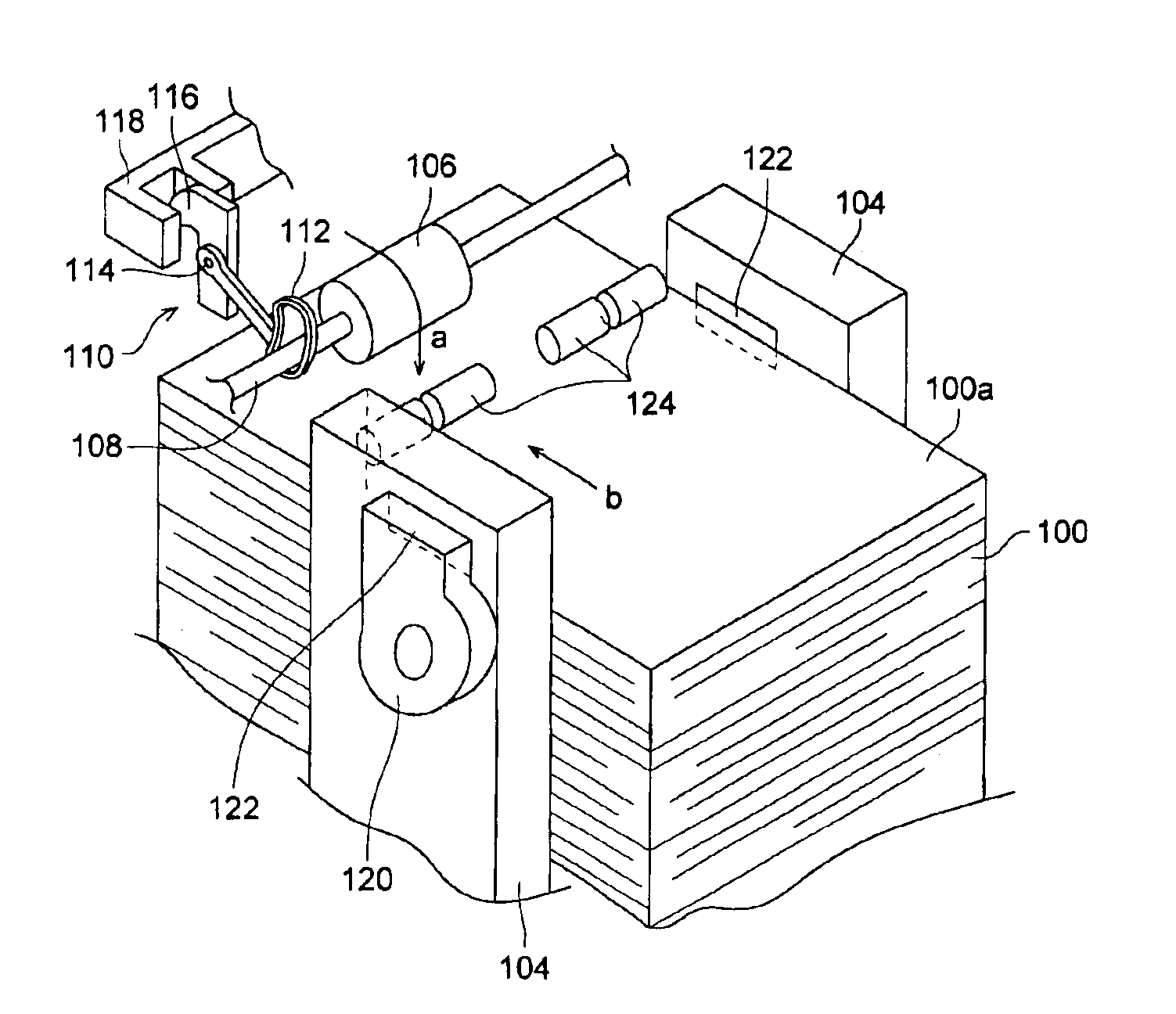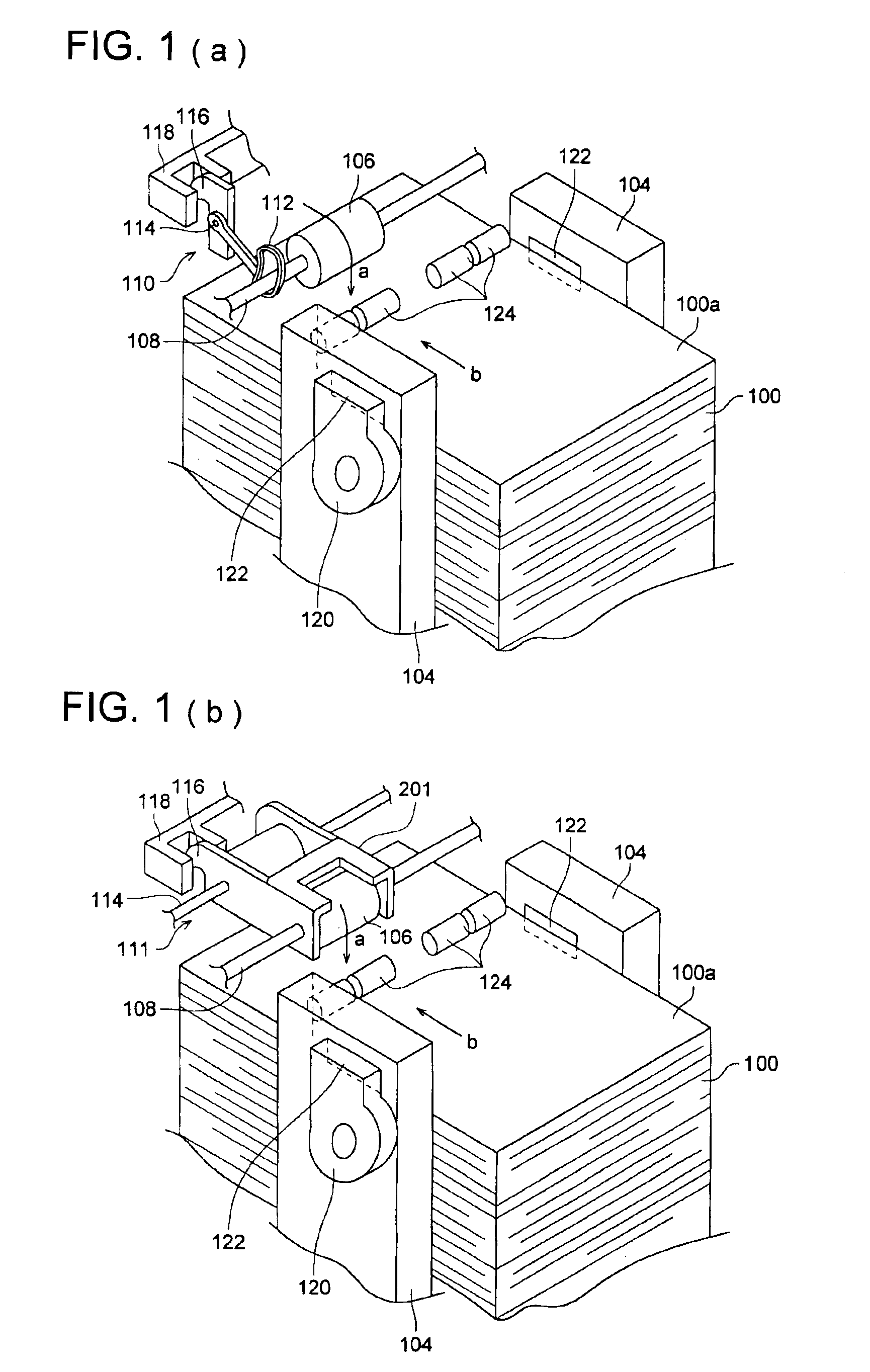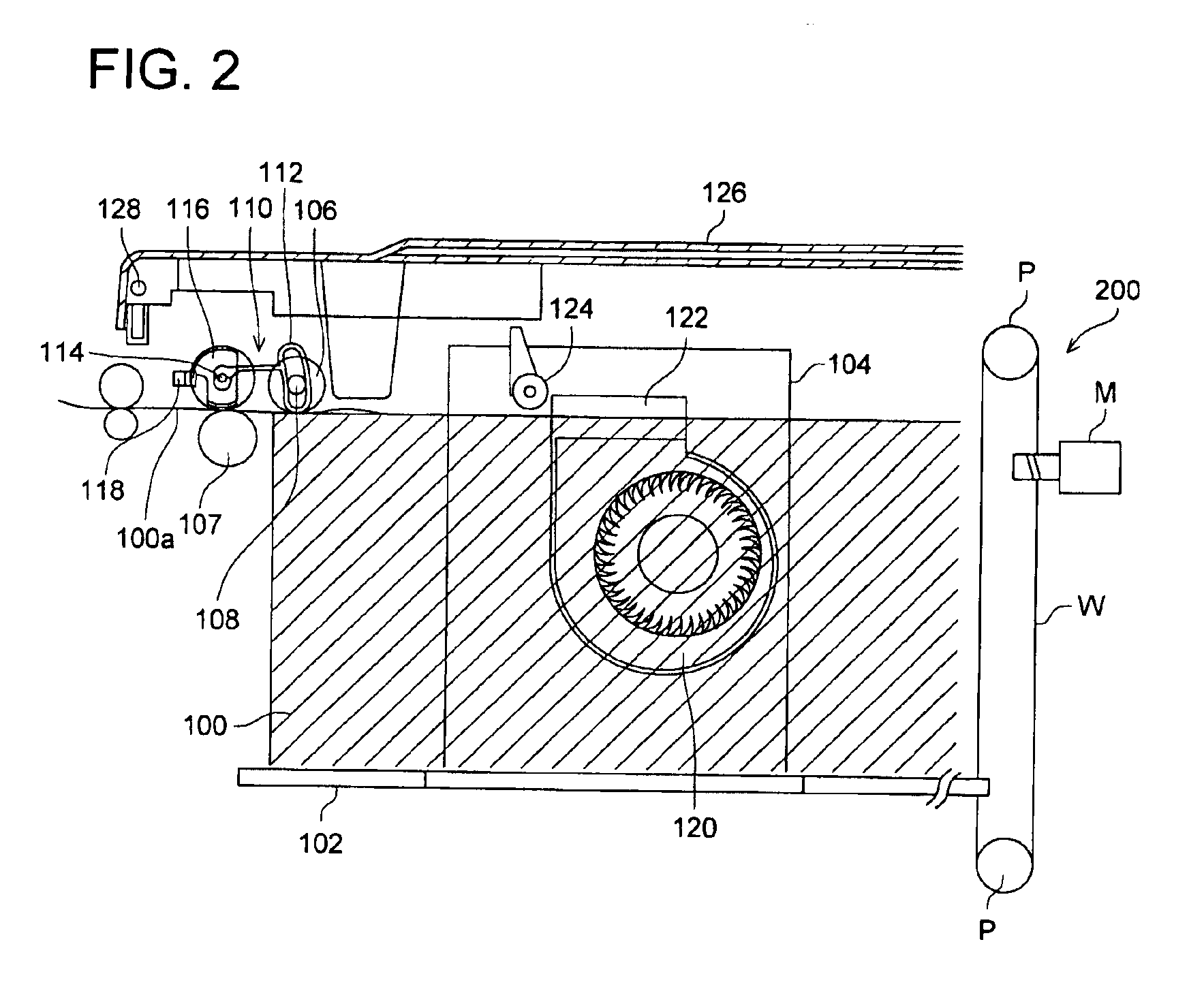Sheet feeding apparatus
a feeding apparatus and sheet technology, applied in the direction of thin material processing, instruments, article separation, etc., can solve the problems of increasing power consumption, generating noise, paper jamming, etc., and achieve the effect of reliably feeding the sheets
- Summary
- Abstract
- Description
- Claims
- Application Information
AI Technical Summary
Benefits of technology
Problems solved by technology
Method used
Image
Examples
Embodiment Construction
[0022]An embodiment of the present invention will be described hereinafter in reference to the drawings. FIGS. 1(a) and 1(b) are perspective views of the main part of a sheet feeding apparatus according to the present invention with its cover removed. FIG. 1(a) shows a view indicating a sheet surface sensor 110, while FIG. 1(b) shows a view indicating an another sheet surface sensor 111. FIG. 2 is a longitudinal sectional view of the main part of the sheet feeding apparatus. FIG. 3 is a top view of the main part shown in FIG. 1.
[0023]In these drawings, a stack of sheets 100 is placed on a tray 102 which has an elevation mechanism 200, as shown in FIG. 2, that raises and lowers the tray. Lateral adjusting members 104, such as side panels, etc., move freely in the direction that intersects with the feeding direction of the stacked sheets 100, that is, the width direction in this embodiment, and slightly come in contact with both lateral sides of the stacked sheets 100 to restrict the ...
PUM
 Login to View More
Login to View More Abstract
Description
Claims
Application Information
 Login to View More
Login to View More - R&D
- Intellectual Property
- Life Sciences
- Materials
- Tech Scout
- Unparalleled Data Quality
- Higher Quality Content
- 60% Fewer Hallucinations
Browse by: Latest US Patents, China's latest patents, Technical Efficacy Thesaurus, Application Domain, Technology Topic, Popular Technical Reports.
© 2025 PatSnap. All rights reserved.Legal|Privacy policy|Modern Slavery Act Transparency Statement|Sitemap|About US| Contact US: help@patsnap.com



